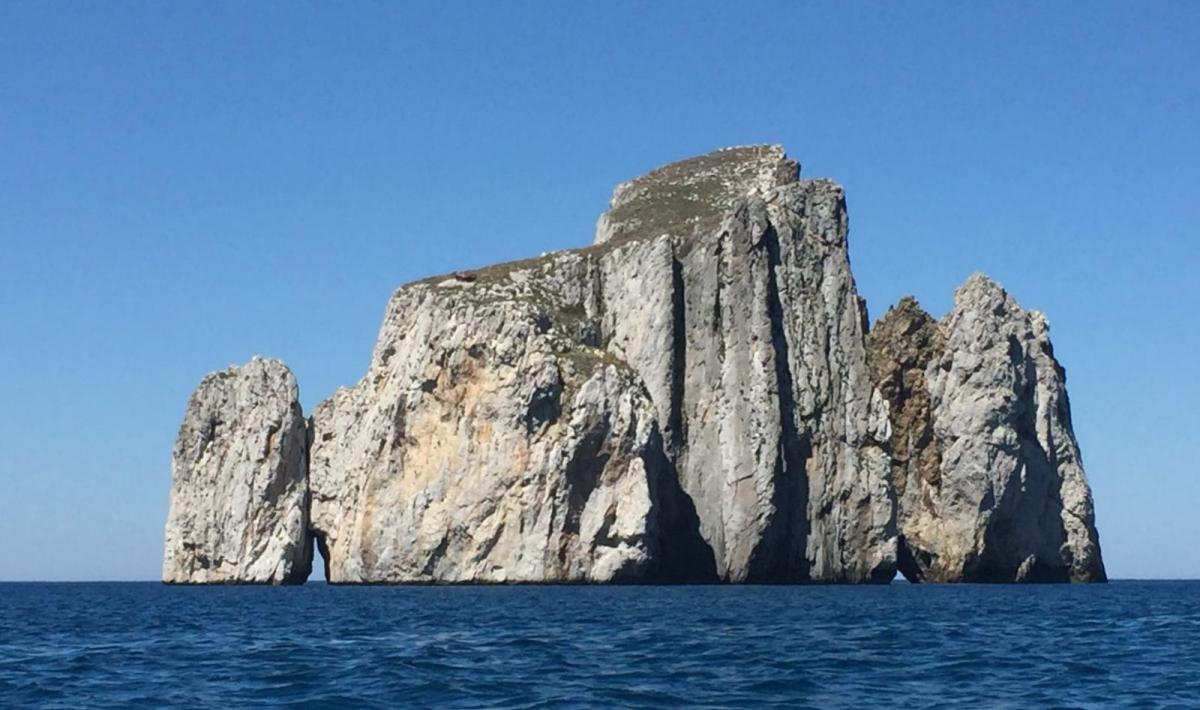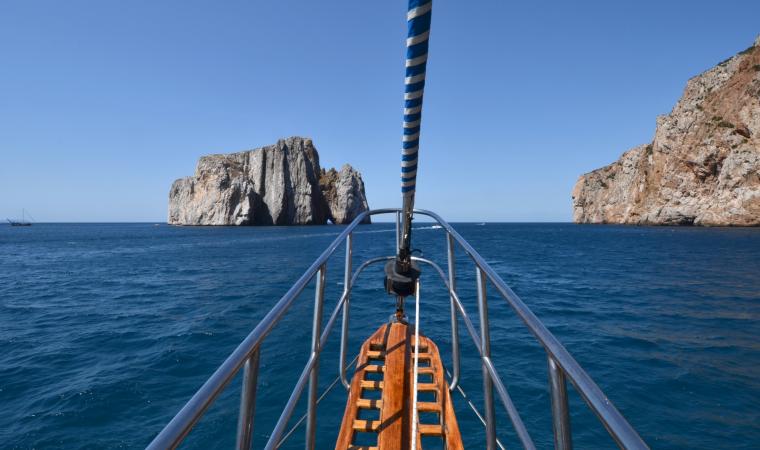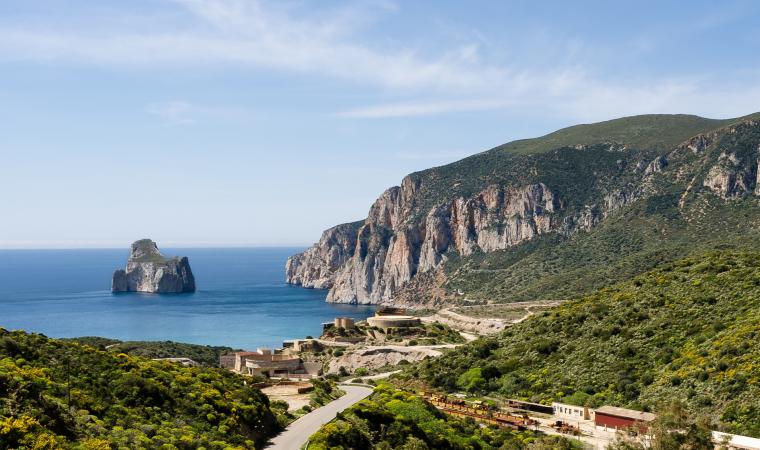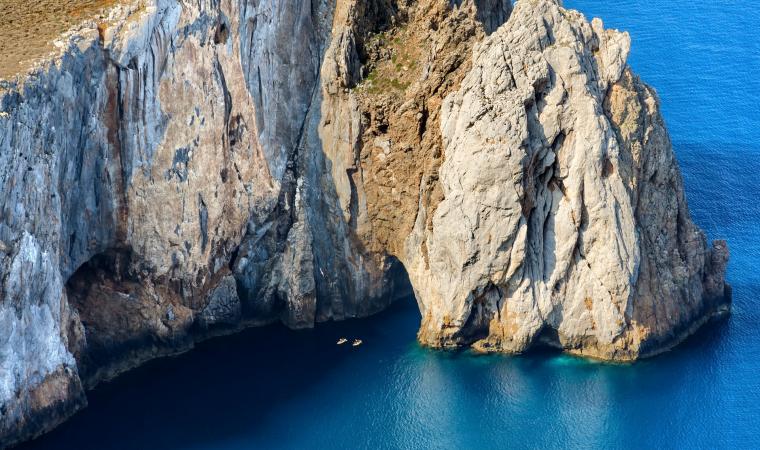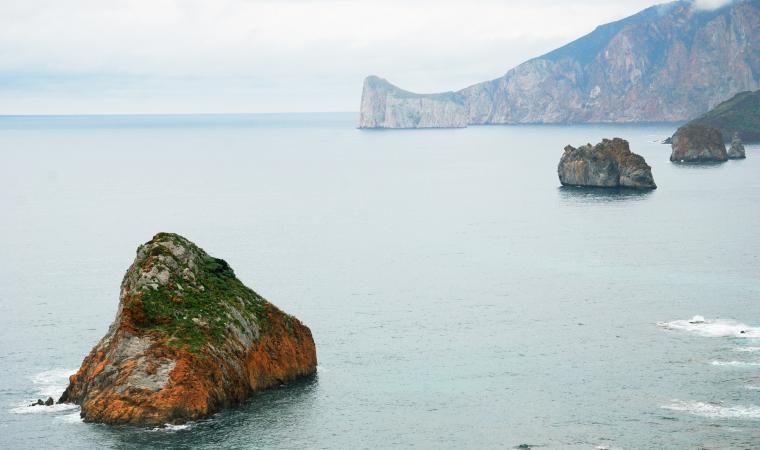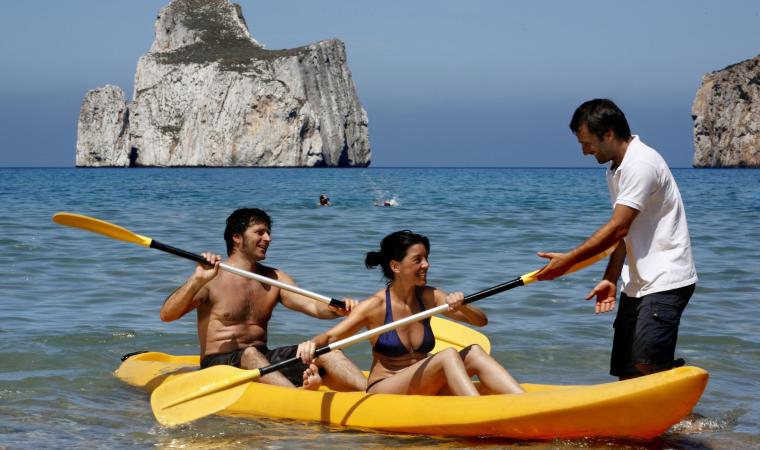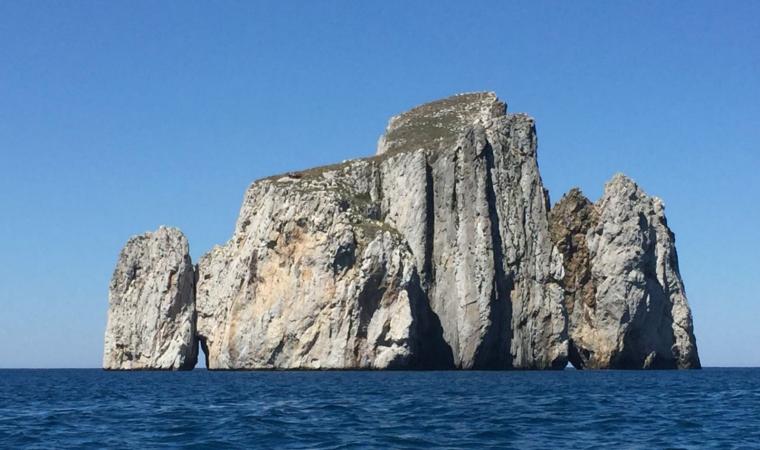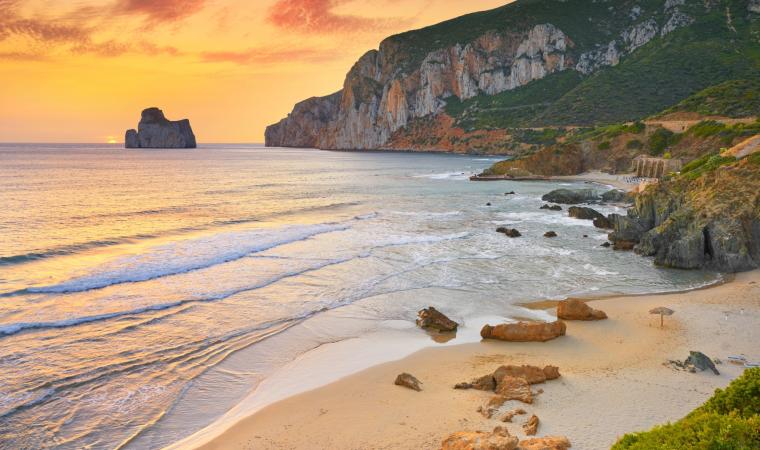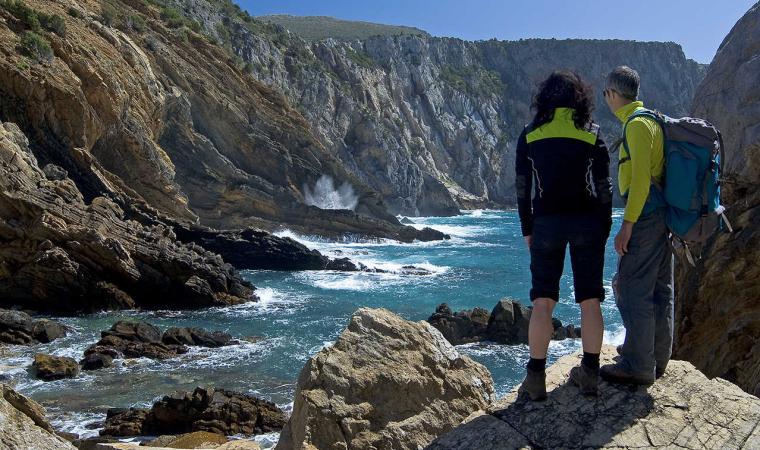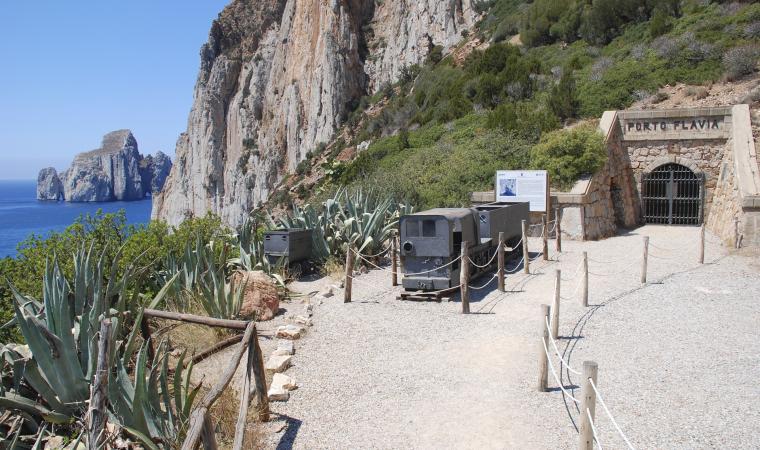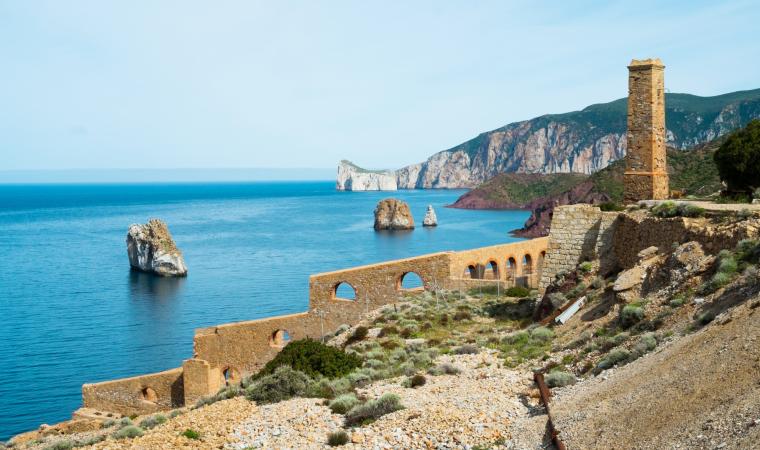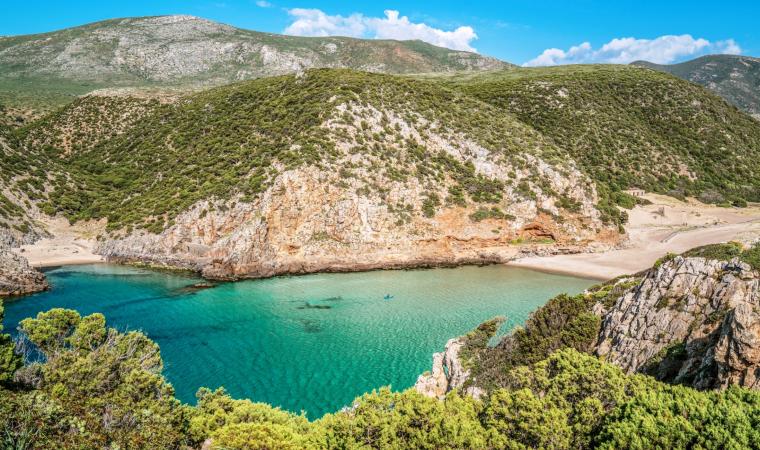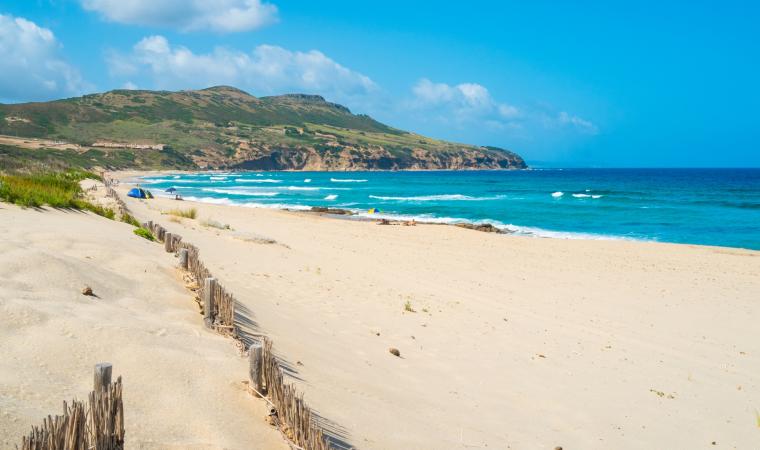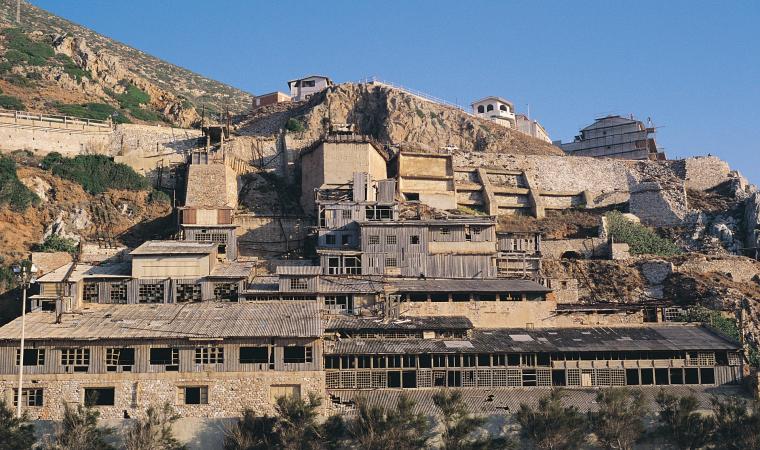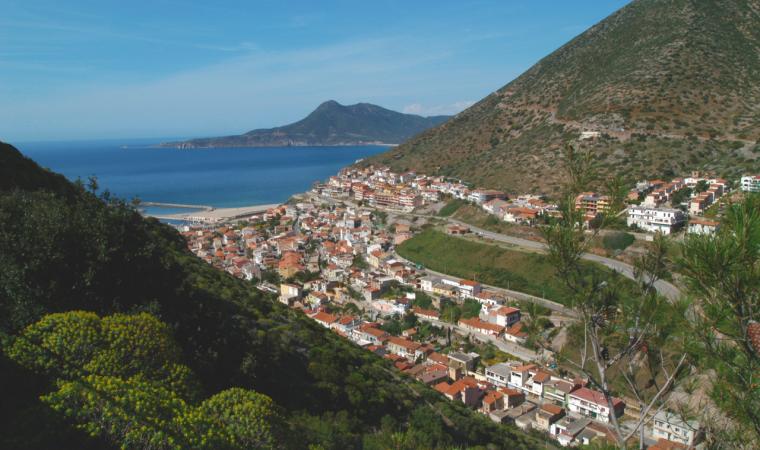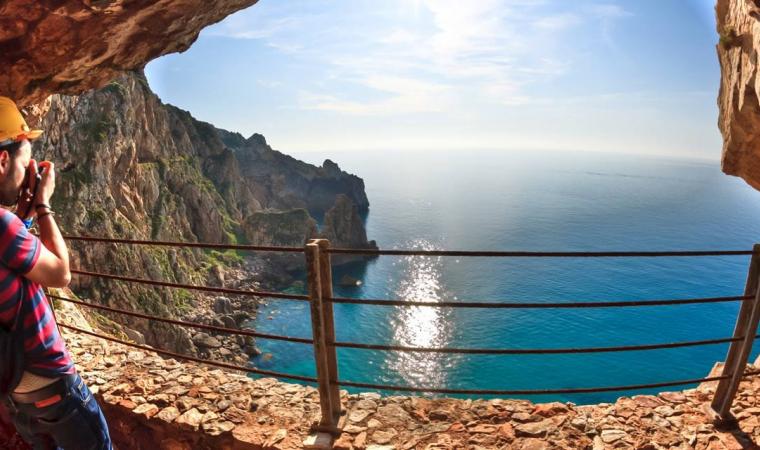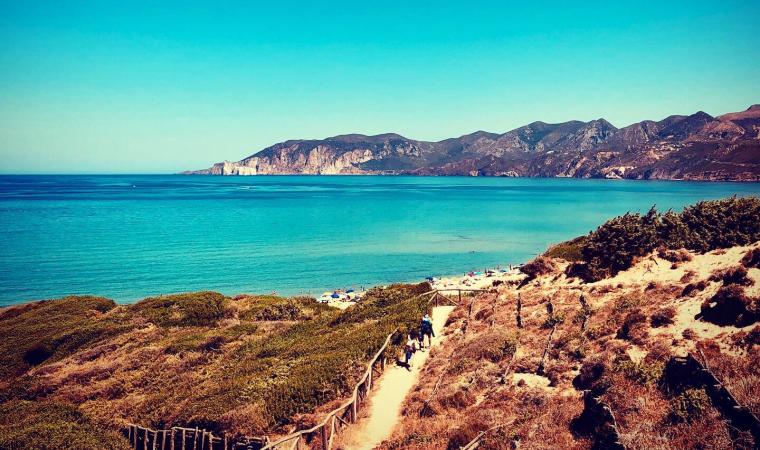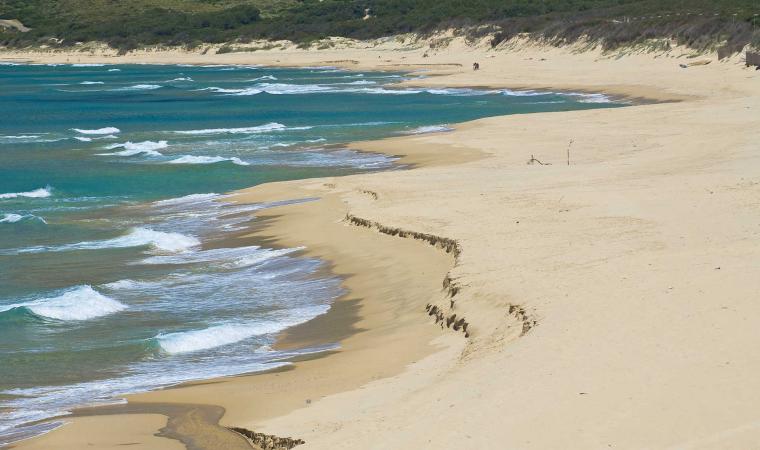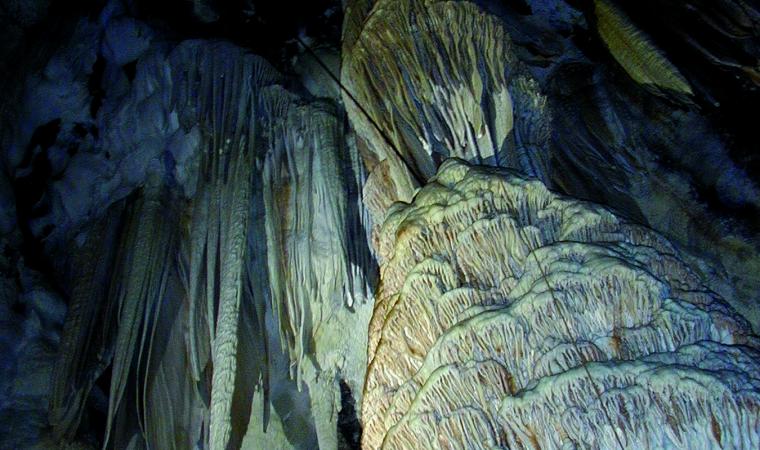Admiring the impressive rock at sunset, as it rises out of the sea just a few metres from the coast, increases its splendour: the sunlight bounces off the limestone silhouette in every shade of yellow and orange. Pan di Zucchero (meaning Sugarloaf) is one of the most impressive and spectacular natural monuments on the Island and the symbol of the coast of Iglesias. The name comes from its resemblance to the famous Pão de Açúcar (Sugarloaf Mountain) in the bay of Rio de Janeiro and in the 18th century, this name had already replaced the original Sardinian name Concali su Terràinu. You can get to it in a dinghy or by boat from the magnificent cove of Masua, a coastal district in the Iglesias area, just two and a half kilometres away.
Once having succeeded in reaching its rocky walls, which is not so simple, climbing enthusiasts, with equipment and supported by expert guides, can climb up its 133 metres: it is the highest sea stack in the Mediterranean. From the top, you will be able to see its three ‘younger brothers’ next to it, two of which are known as s'Agusteri and il Morto, the southernmost one. The four sea stacks of Masua are structurally homogeneous, connected and an integral part of the monument: their cerulean-white colour stands out against the violet-coloured coast in front of them. They are composed of Cambrian limestone, which is chemically almost pure, and they were formed by the erosion of the sea, which generated their detachment from the mainland and specifically from the cliff of Punta is Cicalas: the 300-metre stretch of sea separating them is often inaccessible.
Pan di Zucchero has a massive, rounded shape. Karst phenomena have pierced its surface (less than four hectares) with flat steps, leading to the creation of two tunnel-like caves. They open up at sea level, are 25 and 20 metres long respectively, and are both habitats for seabirds. It is possible to pass through one of them in a small boat. Opposite the little island, the outlet of the Porto Flavia mining tunnel looks out to sea, magically suspended halfway up the sheer rock face. It is the most visible extremity of a futuristic complex of underground tunnels that end at a construction carved into the cliff at the beginning of the 20th century. From here, the minerals were loaded directly onto merchant vessels. At the foot of mine, there is the cave of Grotto del Soffione, so called because of the effect of the waves that enter the cavity and ‘bounce’, making big splashes. Alongside the ruins, there is the little beach of Porto Flavia mine: from the small lido, a destination for scuba diving enthusiasts, you will be dazzled by the contrast of colour between the greyish-white of the giant marine limestone rock, the azure and blue of the sea and the green of the surrounding pine forest.
The entire coast of Iglesias has a wild appeal and a great variety of landscapes. Not to be missed, are Porto Paglia and Nebida, another small ‘mining’ district. Two kilometres to the north of is Cicalas is the Grand Canal of Nebida: it is a long, narrow valley, crossed by a torrent that flows to the sea in a splendid ‘fjord-like’ inlet, characterized by a small beach and a series of caves: at the foot of the cliff there is the Grotta di Canal Grande, a 150-metre long tunnel carved by the sea that crosses the promontory from one side to the other, just above the surface of the water; under the north wall, the Grotta delle Spigole (cave of the sea bass) opens up. Further north, there are the inlets of Porto Sciusciau and the beautiful Cala Domestica, in the territory of Buggerru. You can also visit the Grand Canal via land, departing from Masua: a trekking trail along the tracks of the mining works. The coastline and, more generally, the life of the Iglesias area were deeply marked by mining activities. At the end of the 19th century, a great deal mining work took place at the Masua mine, while today the complex includes dwellings located on various levels, a school, a hospital, a church and workshops. It is a ghost village and a stage of the Santa Barbara mining route as well as being part of the Geomining Park of Sardinia, recognized as a UNESCO world heritage site.

